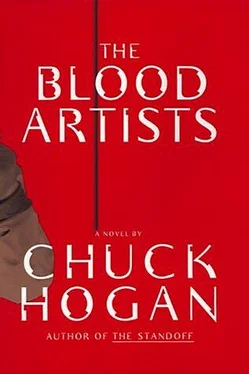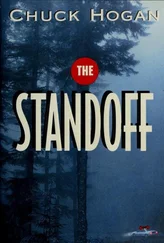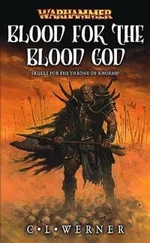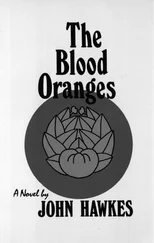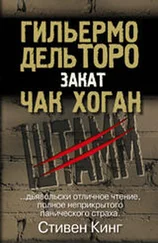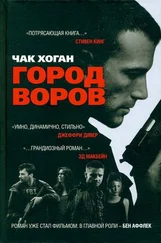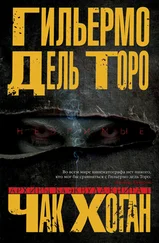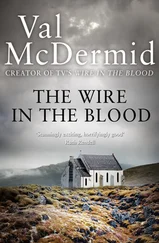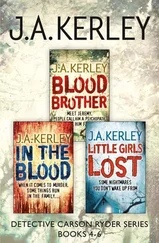He discarded the hypodermic, and we met at the foot of the small bed.
“Abscesses match,” I said, mumbling. “The rash, the languor. Odor.”
Peter was excited. I suppose we both were. “I don’t recall hypotoxicity,” he said — the inability to absorb inhaled oxygen, likely the cause of her hyper-sensitized nerve endings. He listed the classic diagnoses, recalled from text. “If the sores do not touch: recovery probable. If sores cluster: fifty-fifty. If bleeding erupts beneath the skin: death likely.”
The girl’s sores were clustered. I nodded just to nod. She lay trembling on the stained towels beside us.
“I’ll run the blood sample,” Peter said. A PCR assay would provide us with a genetic fingerprint of the virus and demonstrate conclusively whether or not it was indeed variola. Before he left, something in the room darkened Peter’s expression, and he turned to Kaunda.
The aged doctor was slumped in the girl’s rocking chair, his bloodied gloves dangling to the floor. Peter asked him where the parents were.
“Dead,” Kaunda said in French, making no effort to lower his voice. “Two days ago. I buried them next to the house.”
Peter exited the room without the blood sample. I heard him in the hallway, and he was throwing open doors.
I returned to the girl’s side. Her half-open eye was again focused on the candle above the bed. I reached for her small hand and took it in my own, lightly, aware of the rubbery strangeness of her fingers even through my thick gloves, monitoring her eye for distress.
“Jacqueline,” I said. “Jacqueline.”
Her head rolled slightly and the dark pupil inside her raw red eye settled on me. I warmed my eyes and put forward the smile of a confident doctor. I nodded. Her unwavering stare was one of apparent amazement.
“Je flotte,” she whispered. I am floating.
It would be a minimum of six hours before she could be safely evacuated. Six hours before the Pasteur Institute could assemble and fly in a biohazard team with an isolation stretcher — assuming no reluctance on the part of the French government in granting a visa to an African national racked with an unidentified contagion that was perhaps smallpox, a single case of which would, by definition, represent an epidemic. At that point I hoped that it was just that, mere smallpox, the reemergence of the worst scourge in human history, but an entity known and imminently curable.
I was staring at the girl, waiting for her to tell me what to do, as Peter reappeared at my side. “A man’s study in the front room,” he said. “Mural of a lion hunt on the wall. A rolltop desk full of French pens and empty file hangers. A laser printer. Two unused business ledgers in a drawer, tablet chargers, and a rotary file on the desk stripped to the brackets, even the alphabet dividers. The stove in the kitchen is full of burned paper.”
He turned from me to face Kaunda and spoke bitingly, in French.
“Where does the back road lead?”
Kaunda appeared quite aged as he looked up at Peter from the small chair in the corner of the room. He did not immediately answer.
“You are a camp doctor,” Peter said.
Kaunda’s eyes above his blood-dappled mask showed a prisoner’s expression of weary defiance, as that of a man so broken and exhausted that he existed beyond fear. I was still very much in the dark as to what Peter was getting at.
“That is why you requested vaccine only, and not support,” Peter said. “You didn’t want us here at all.” Anger burned brightly in his gray eyes, glowing with each flicker of the candle. “What are you bringing out of the jungle? It can’t be ivory. Diamonds?”
Kaunda’s latex hands rotated slightly at the ends of his arms in a truncated shrug, and his sad eyes pleaded. “Monsieur Moutouari ordered that help be called only if his daughter became ill,” he said in French.
Peter said flatly, “How many more cases like this one?”
“None,” Kaunda said. He blinked profoundly, many times. “The others are much, much worse.”
The girl’s hand slipped from my grip.
Peter told him, “You bring the girl,” then picked up my emergency kit and moved out of the room.
I remained, awaiting an explanation from Dr. Kaunda, but the old doctor just sat looking at the dark floor, his head shaking weakly.
The girl was trying to speak. Her tiny, blistered throat was working, but not well. I leaned close and lowered my masked head to her lips as she managed a hoarse whisper.
“C’est la mort,” she said fiercely. It is death.
I wondered at the extent of the girl’s agony as we crawled along behind Kaunda’s muddied 4x4. I chided myself for being too accustomed to life in comfortable, metropolitan Atlanta, having overlooked the significance of the improved jungle road, and failing to question the logistics of constructing such a house in the depths of the African rain forest. And then there was the original EPI-AID alert, broadcast by a general practitioner in the middle of the jungle with a state-of-the-art digital uplink. Peter had suspected treachery from the beginning.
On the way out of the house I had looked in through one of the doors opened along the hallway and saw the parents’ bed, stripped bare and stained with blood, vomitus, excrement. Outside, a plot of freshly spaded dirt lay on the far side of the house, patted smooth by two days of rain.
The road ran two kilometers longer to a wide opening. We parked behind Kaunda and pulled off our respirators, unpacking the contact suits: bright red-orange rubber jumpsuits with attached hoods and flexible UV face pieces. We stepped into them and pulled them up over our shoulders, sealing them across our chests, waist-to-neck, like the zipper of a plastic bag.
My head throbbed with the danger and the heat. I tugged at the cuff gaskets on my sleeves and the thick black rubber gloves attached, an additional layer of protection for the most vulnerable area of a physician’s body. Peter came before me and took hold of my sleeves and coolly double-checked the seal. His thin lips inside his face piece faintly grinned at my distress. “Nobody should be enjoying this,” I said. “Not even you.”
Kaunda spread a heavy sheet out on the grass. The girl remained curled up inside the back seat, moaning, quaking, nude. I reached in and lifted her out, feeling the fragile puffing of her immature lungs in my arms, and she was lighter even than I had, imagined. I lowered her onto the sheet and she doubled in pain, breath pushing through her torn lips like choked laughter. I straightened, immediately drenched in sweat and miserable in spirit.
Behind us, two lanes of shanties constructed of corrugated metal faced off across a wide, sun-bleached band of beaten grass. Heavy stones secured the flat shanty roofs, cooled by leafy tree limbs from the encroaching jungle. This would later become known to us as the heart of the camp town: a kitchen cafeteria, public latrine, small liquor store and bar, general store, Dr. Kaunda’s dispensary, and a wide, unwalled market. Farther away, two rows of smaller thatch huts continued around a rightward bend into the trees.
We saw only one person outside. A man was squatting beneath a large woven mat strung up on bamboo stalks near the first of the huts, his shoulders resting against his knees and his hands flat on the burned grass beside his feet. Gourds and pots lay scattered and overturned on a mat before him. He saw us and rose to stand, wearing only a shin-length pair of custard-colored pants, then abruptly turned and disappeared into one of the huts.
A distant wail startled us, and as I turned my head within the hood, a second figure burst from one of the shanties, racing across the grass mall toward the huts. She was a tall, woolly-haired woman unused to running, her slender arms flapping over abrupt strides, wearing a bright, shin-length floral skirt, a tight headdress of the same fabric, and a faded pink T-shirt. Halfway across the grass mall, she saw us, cried out and turned. Her sandals flopped as she raced toward us.
Читать дальше
